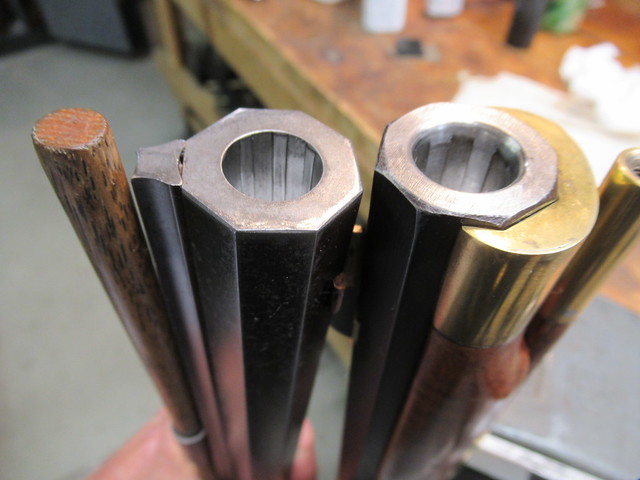user 34300
54 Cal.
- Joined
- Nov 25, 2019
- Messages
- 1,742
- Reaction score
- 2,125
The beauty of the lathe is making an optimal crown. I use a sickle shaped cutter. The inner most part of the crown is a shallow angle and the outer most is rounded over. That means the rifleing lands are removed gradually over about 0.1". Then the taper increases leaving room to start the patch ball, then it rounds over. It is not grossly funneled (coned) like some do. It only takes a few thousands removed to make a good crown. Only the minimal is removed. It is also dead nuts concentric with the bore. The last step is to polish it to the 600 grit level. A smooth surface is very important.
If you have sharp edges where one angle changes to another, it makes loading more difficult. A simple one angle crown will have the same problem. A crown that is done free hand will be hit or miss on accuracy and point of impact.
If you have sharp edges where one angle changes to another, it makes loading more difficult. A simple one angle crown will have the same problem. A crown that is done free hand will be hit or miss on accuracy and point of impact.
Attachments
Last edited:





 IMG_0421
IMG_0421


